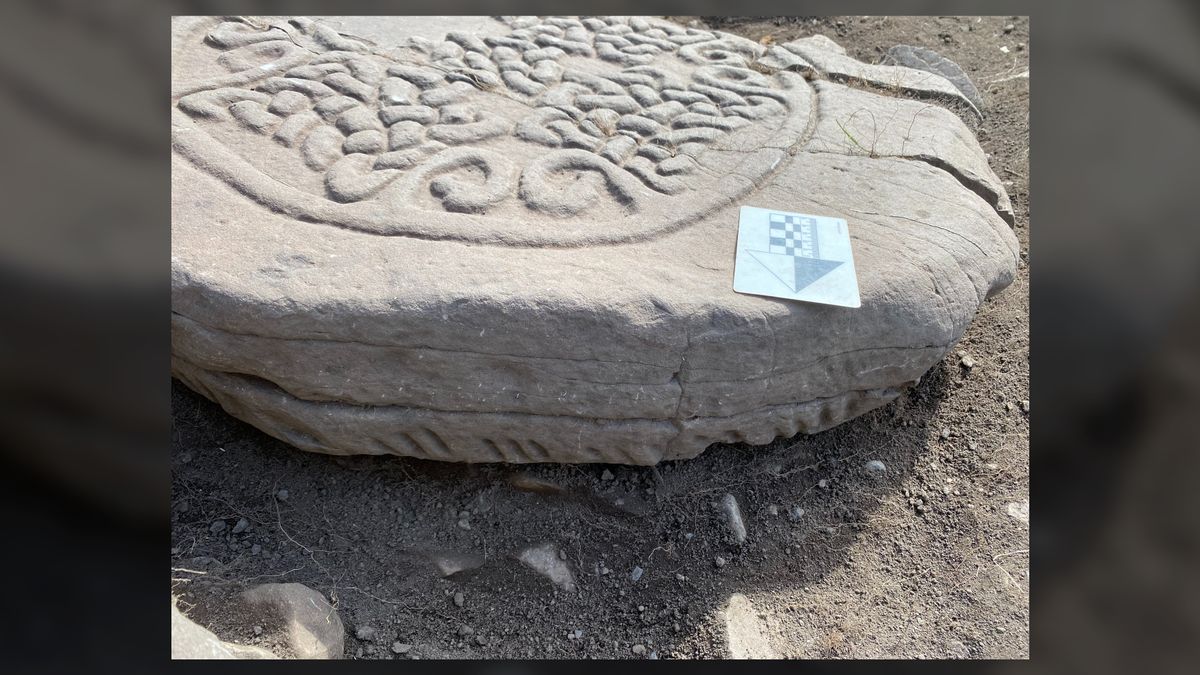Rare medieval script discovered on stone carved by Scotland's 'Painted People' [View all]
By Kristina Killgrove published about 23 hours ago
1,500-year-old carved stone from the 'Painted People' in Scotland possibly reveals a bull, pelicans and an ancient alphabet.

This image shows a close-up of an ogham alphabet inscription on a Pictish cross slab. (Image credit: Murray Cook / Stirling Council)
Archaeologists and volunteers have discovered a stone bearing a mysterious inscription and carved birds that the Picts of Scotland crafted more than a millennium ago. The cross slab, found in a small cemetery last month, dates to between A.D. 500 and 700, and sheds new light on the historic interaction between heritage and faith in the northern U.K.
The Picts, or "Painted People," were so-named by Roman historians because of their supposed war paint and tattoos ("picti," is the Latin word for "paint"

. They lived in northern and eastern Scotland in the early medieval period. Likely descended from Celtic tribes, the Picts are famous for successfully resisting Roman conquest. While the Romans painted the Picts as barbarous and backward, they were largely subsistence farmers, growing grain and herding domesticated animals.
After the Roman Empire withdrew from the British Isles in the fifth century A.D., Pictish society grew to form a permanent but unstable monarchy intent on protecting its territorial boundaries. Early missionaries from Ireland converted many kings of Pictland to Christianity in the mid-sixth century A.D. Then, at the Battle of Dun Nechtain(opens in new tab) in A.D. 685, the Picts pushed the Britons out of Scotland and created a mini-empire that would last until around A.D. 900 and the arrival of the Vikings.
But the newly uncovered cross slab, found in the Old Kilmadock cemetery near Doune, Scotland, a region that was historically a buffer zone between the Picts and the Romans, and later the Britons, complicates that tidy history. "The cross slab is the first one in this region, and may mean that the residents started to think of themselves as Picts," Stirling Council archaeologist Murray Cook(opens in new tab), who led the recent excavation, told Live Science in an email.
More:
https://www.livescience.com/pictish-stone-with-medieval-alphabet-scotland
